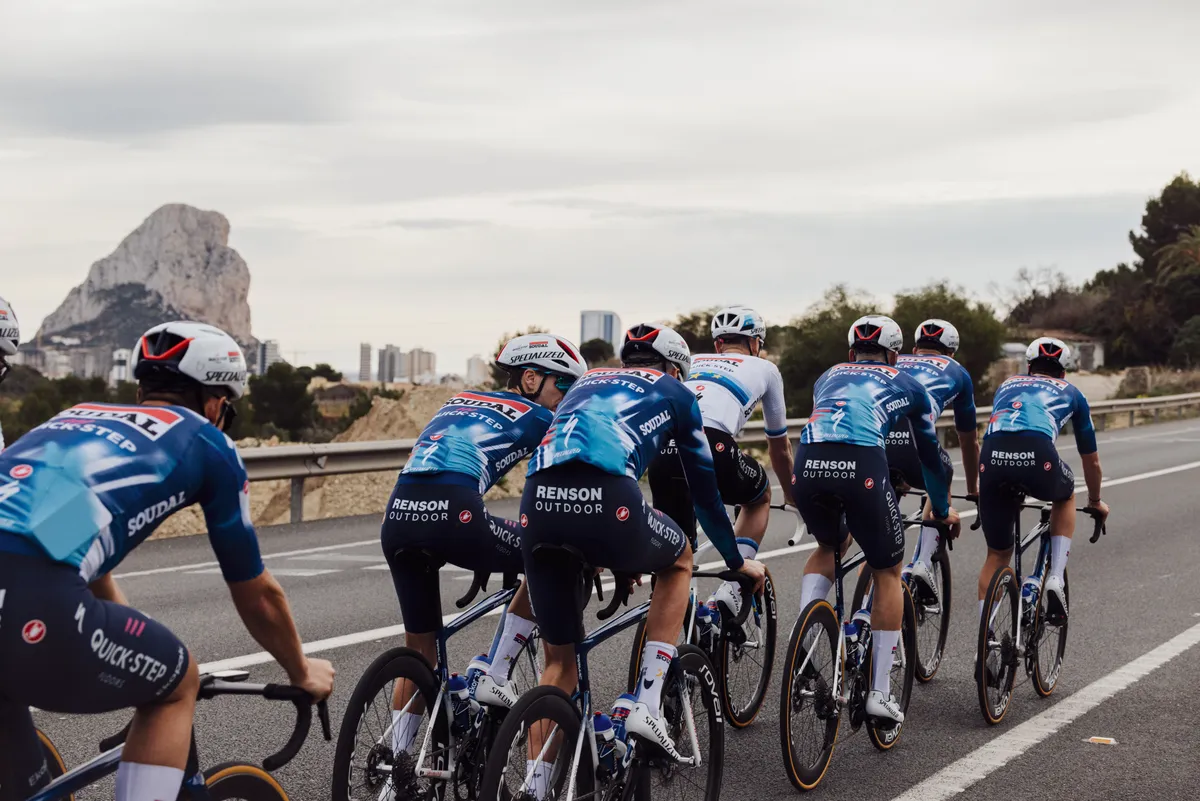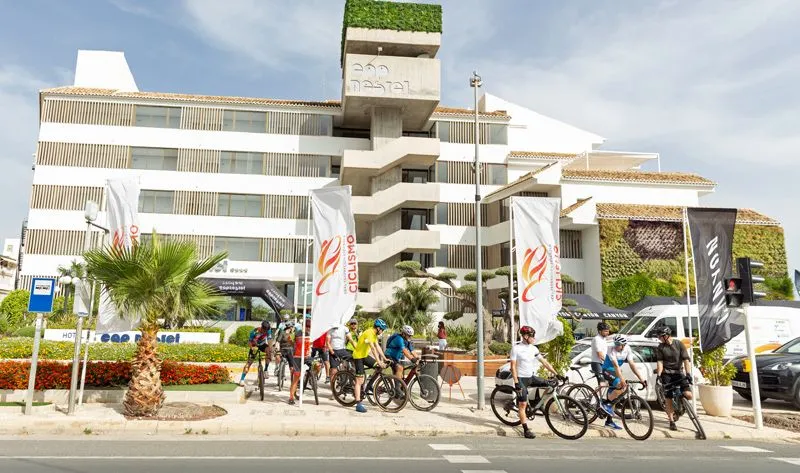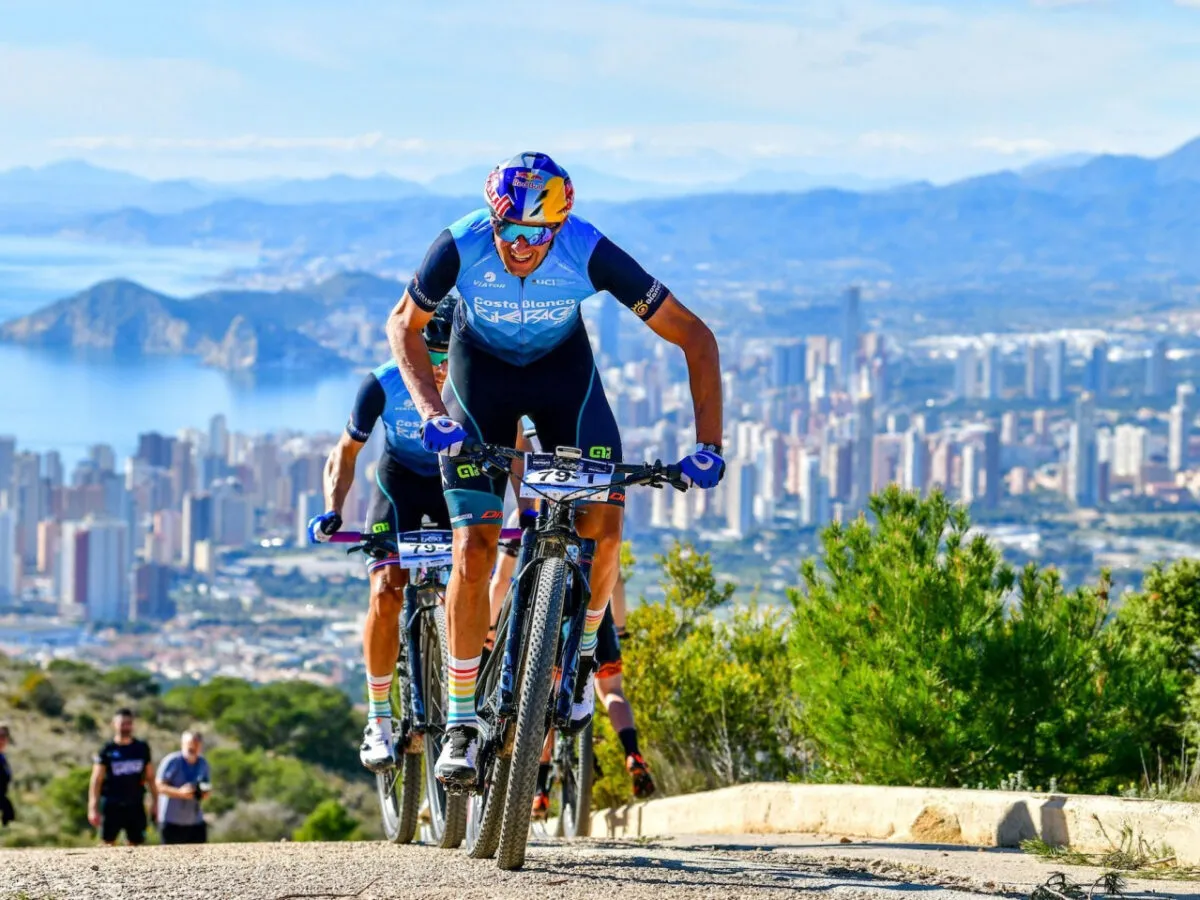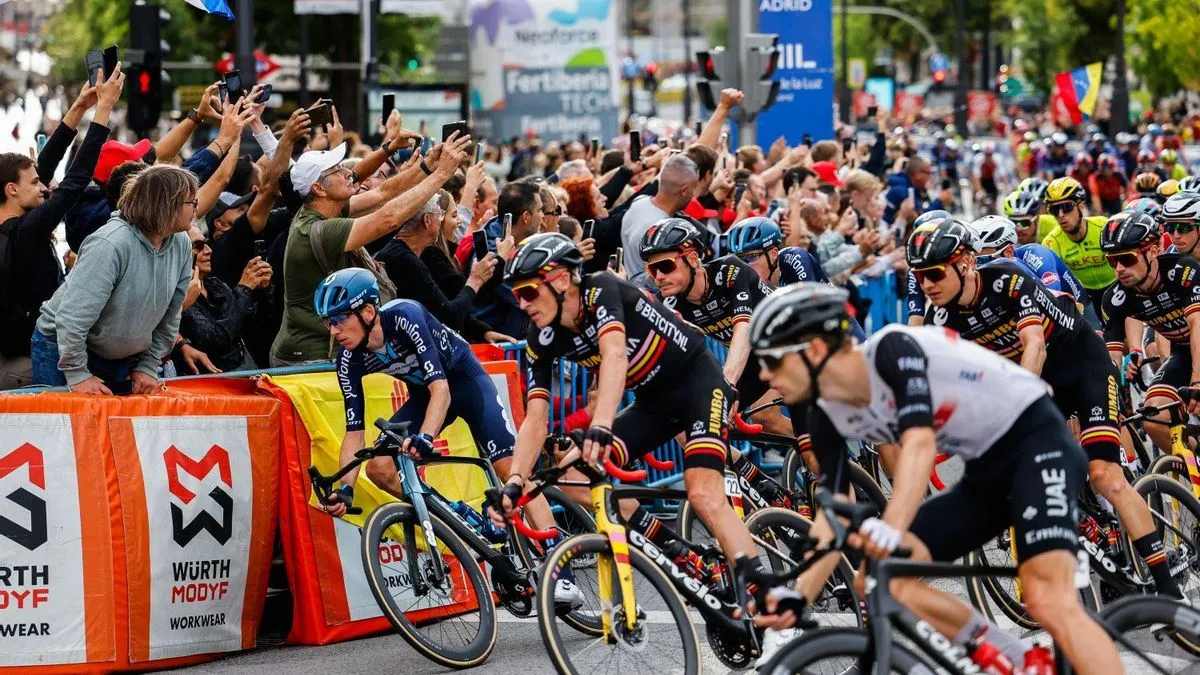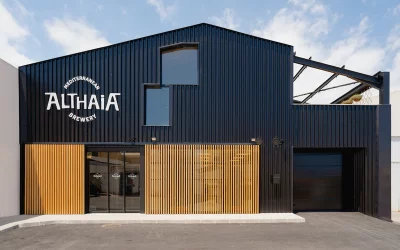The Costa Blanca is a year-round cycling base with dependable winter sun, smooth roads, quiet inland valleys, and headline climbs like Coll de Rates and Port de Bèrnia. Pros camp here each winter, MTB riders love the rocky singletrack above Calpe and the Mascarat ravine, and gravel riders get endless farm tracks through orange groves. Base yourself in Altea, Calpe, Dénia/Jávea, or the Xaló–Parcent valley and alternate coast spins with mountain days.
Article Navigation 🧭
Why cyclists love the Costa Blanca
Reliable riding weather Oct–May; winter mornings that actually make you want to ride.
Variety in a compact area: coast rollers, steady climbs, technical descents—and MTB + gravel from the same base.
Cyclist-ready towns: Calpe, Altea, Dénia/Jávea, Benidorm/Finestrat, Xaló/Parcent.
Cafés every 30–40 km: proper espresso culture and terrace stops built for riders.
First 30 minutes out of Altea and you’re already on near-silent lanes. We’ve waved at a full line doing through-and-off in the Parcent valley while we were just spinning to the next coffee. It’s that kind of place.
Pro teams, winter camps & the local cycling culture 🚐
From December to February you’ll see team buses outside coastal hotels, riders rolling out for effort blocks, and support cars on the valley floors. The Calpe–Altea–Benidorm triangle is a go-to WorldTour winter base because the terrain lets you stack quality hours: Coll de Rates for steady work, Bèrnia for drama, and coastal recovery to finish.
We’ve walked past two team buses on a windy January morning in Calpe—half the café was trying to guess the day’s training plan.
Who you might spot on the road 🚴♂️
This coast isn’t just popular—it’s pre-season HQ. In recent winters you could bump into WorldTour and ProTeam squads on Rates or the Parcent–Xaló valley, and it’s not unusual to see Grand Tour winners and classics specialists training here. We’ve met riders at bar stops on hill routes more than once; it’s surreal and very Costa Blanca.
Image by Picasa
Where to base & sleep
Coast bases (Calpe, Altea, Dénia/Jávea): easy day-one spins, fast access inland for Rates / Bèrnia / Guadalest, and sea-level recovery in the evening. Old-town hostals and boutique stays are perfect if you like walking to dinner. Camping just outside town works great for van-life or longer stays.
Valley bases (Xaló/Parcent): you’re on the climbs. Think quiet lanes, vineyards, and cafés tailor-made for ride debriefs.
Team-friendly hotel notes: look for secure bike rooms, early breakfasts, laundry turnaround, a small workshop space, and a corner for massage/physio and briefings—some coastal hotels actively host pro and amateur camps every winter.
We’ve literally seen three team buses lined up before 9 a.m., riders rolling out in echelons while the sun warms the promenade.
👉 Altea is quite known among cyclist because of the Cap Negret cycling Hotel. Learn more about Altea in our Ultimate Guide to Altea, Spain.
Image from Ciclismo a fondo. Cap Negret Cycling Hotel in Altea.
🏛️ Top things to see
Even on a “bike trip,” you’ll want one slow day for the views:
Old towns & church squares (Altea, Jávea, Dénia) for golden-hour photos.
Clifftop viewpoints along the Sierra Helada edge.
Guadalest village & reservoirs for that blue-green water.
If you time it just after 5 p.m., the winter light hits Altea’s blue dome like a spotlight—worth the short walk up even with tired legs.
👉 Famous areas like Guadalest, Coll de Rates, Castell de Castells, all lie in the Sierra Bernia Mountains. Learn more about the Sierra Bernia Hills in our dedicated article.
Iconic road routes
Coll de Rates (Parcent side)
Steady ~6–7 km at ~5–6% with big, open bends and a café at the top—the local benchmark climb and perfect for repeat efforts.
Follow the route: look for a classic loop that links Calpe/Altea → Parcent → Rates → Xaló → coast.
Port de Bèrnia loop (often with Rates)
A full “greatest hits” day: Bèrnia’s rugged ramps + Rates’ flow + balcony roads with huge views.
After Castell de Castells it gets wonderfully quiet—just freehubs and birds.
👉Link: Exploring Sierra Bernia – One of Costa Blanca’s Wildest Natural Wonders
Guadalest & the reservoirs
Rolling ascents that build in steps; photo stops in the village with blue-green water below. Easy to scale for mixed-ability groups.
Vall d’Ebo / Gallinera endurance
Longer, quieter, and bliss for base miles. Almond blossom in late winter turns the valleys pink—it smells like spring even in February.
MTB & gravel: where it gets “spicy”
Oltà (above Calpe)
Pine-scented singletrack and balcony views over the Peñón. Expect rocky, Mediterranean terrain—modern XC/Down-Country is perfect; drop a few PSI and enjoy.
Mascarat ravine & tunnels (between Altea and Calpe)
Atmospheric cuts through the cliffs with that “movie set” feel—a memorable out-and-back with photos near the old rail tunnels.
We rolled it on 40 mm gravel tyres; fine in the dry. Bring a light if you’re nosing into the tunnels and watch for loose rock after wind/rain.
Sierra Helada / Albir lighthouse path (multi-use)
A tarmac’d coastal path to the lighthouse with pedestrian priority and time windows for bikes—great e-bike-friendly outing with sea-cliff drama.
The first 10 minutes are fully paved and easy. Take the side path to the calas viewpoints and it gets wilder—we spotted wildflowers in early March.
🏁 Costa Blanca Bike Race (MTB stage race)
A four-stage UCI event based around Calpe (late Jan/early Feb most years) with rocky singletrack, vineyard tracks, and coastal views. If you’re here that week, ride in the mornings and soak up the pro vibe after.
Post-stage sea-dip in February? Legit—on sunny days it’s pure recovery bliss.
🚩 La Vuelta a España & the Costa Blanca
La Vuelta rolls through the Costa Blanca regularly—stage starts/finishes often hit Calpe, Benidorm, Dénia, Alicante, and iconic finales like Cumbre del Sol (Benitatxell) or Xorret de Catí show up in the rotation. If you visit in late summer, you can ride parts of a stage route in the morning and watch the caravan sweep through later.
We’ve stood on the Cumbre del Sol ramp and it feels steeper in real life than on TV—bring grippy shoes if you’re spectating near the top.
Local cycling services
You don’t have to self-organise everything. There are local operators that offer:
Bike hire (road/MTB/e-bike) with delivery to your base and gearing suited to Rates/Bèrnia.
Guided rides & training camps (small groups, daily routes, support car on bigger days).
Coaching & skills (descending on rocky terrain, pacing on long climbs).
Nutrition & kit on site (no need to fly with a pantry).
Hotel partnerships (secure storage, early breakfasts, laundry, massage/physio space).
(When you’re ready to monetise, insert paid “Partner Spots” here without rewriting the page.)
Looking for a cycling service?
Find some of the most relevant and vetted businesses in the space to assist you.
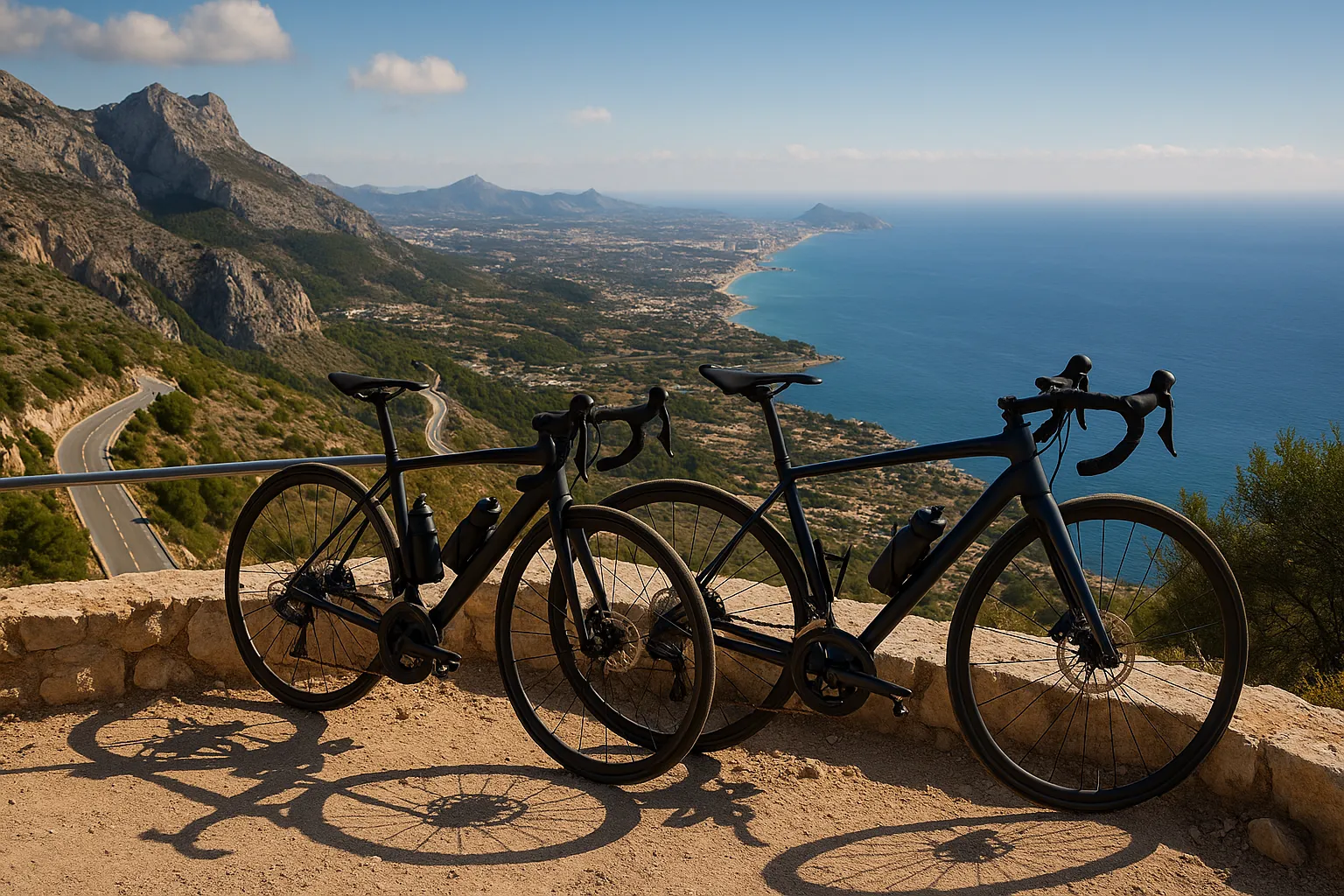
When to ride
Prime: Nov–Mar for winter-sun base miles.
Spring: Feb–Apr for blossom and colour (fewer tour buses on big viewpoints).
Summer: Start at sunrise; heat and traffic nudge up after ~10:30.
Forecast tip: for ride-day decisions (wind on the coast vs calm inland), check a trusted local forecast right before you roll.
Safety & etiquette (quick but important)
Early starts = emptier roads and happier café stops.
Descents can hide loose gravel after wind/rain—look through corners, don’t apex blind.
Multi-use paths (e.g., Albir lighthouse) = pedestrian priority and time windows for bikes.
Editor’s Conclusion
The Costa Blanca rides like a greatest-hits album: Coll de Rates for rhythm, Bèrnia for drama, balcony roads that make you sit up and look around. In winter you’re sharing lanes with the pros; in spring the valleys smell like blossom. Pack a gilet, start early, and let the day decide if it’s a coast spin, a valley loop, or a big-kid mountain day. That’s the magic here.
Frequently Asked Questions ❓
Do pro cycling teams train in Costa Blanca ?
Yes. You’ll often see squads on Coll de Rates and the Parcent–Xaló valley in winter, with team buses outside coastal hotels.
Where should I base myself for a first trip?
Altea or Calpe: easy coast spins, instant access to Rates/Bèrnia/Guadalest, and tons of cafés and services. Xaló/Parcent if you want to be on the climbs.
Can I get bike hire and guided rides locally?
Yes—road, MTB and e-bike hire with delivery is common, plus guided days, camps, and skills coaching.
Is Coll de Rates hard?
It’s steady and very doable: ~6–7 km at ~5–6% with wide, confidence-building bends—great for repeats and mixed-ability groups.
Best months to ride?
Nov–Mar for winter base; Feb–Apr for blossom; summer if you roll pre-sunrise.
Can I cycle the Albir lighthouse path?
Yes, but it’s a multi-use path with pedestrian priority and time windows for bikes. Go early.
Credits & Sources
Official project site: specs, amenities, location distances, “tallest residential” positioning.
El País (Economía, 1 Sep 2025): ~230 m, national ranking (~4th in Spain), timeline (~2028), investment (€80–100 M), groundwork started.
El País (C. Valenciana, 28 Aug 2025): 64 floors, ~260 homes, 50 m to beach, wind-tunnel testing (UPM), 7 high-speed elevators; handovers from H2 2028; administrative budget line.
Wikipedia (ES) – TM Tower: consolidated figures (230–230.5 m; 64 floors; ~260 homes) with local press references; used as a cross-check.
Images © TM Grupo Inmobiliario / TM Tower — used with reference to the official project site: tm-tower.com


